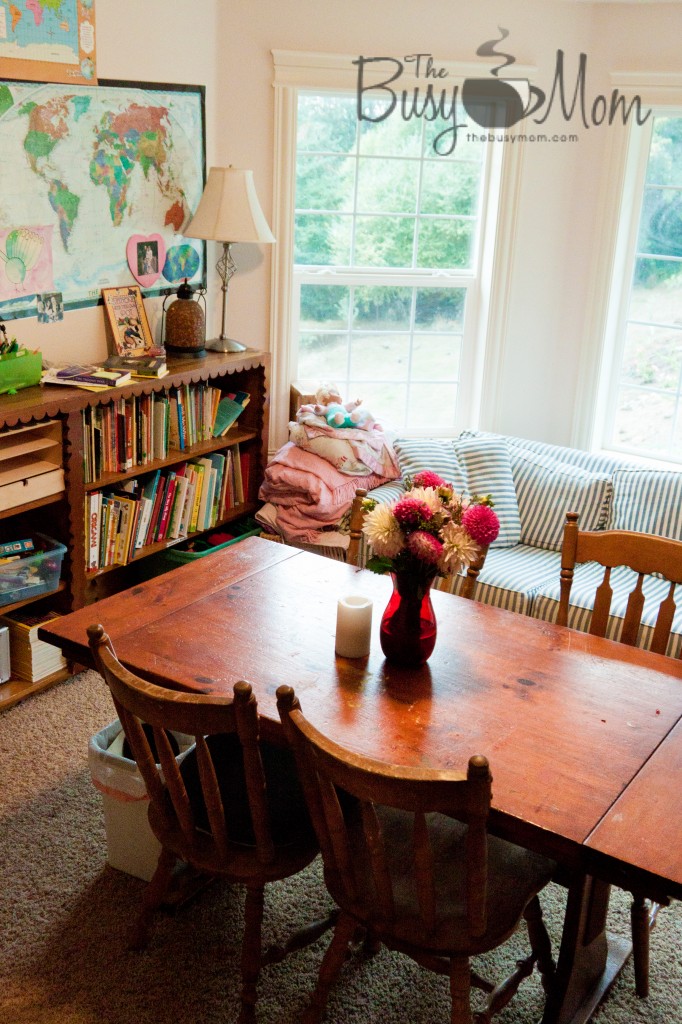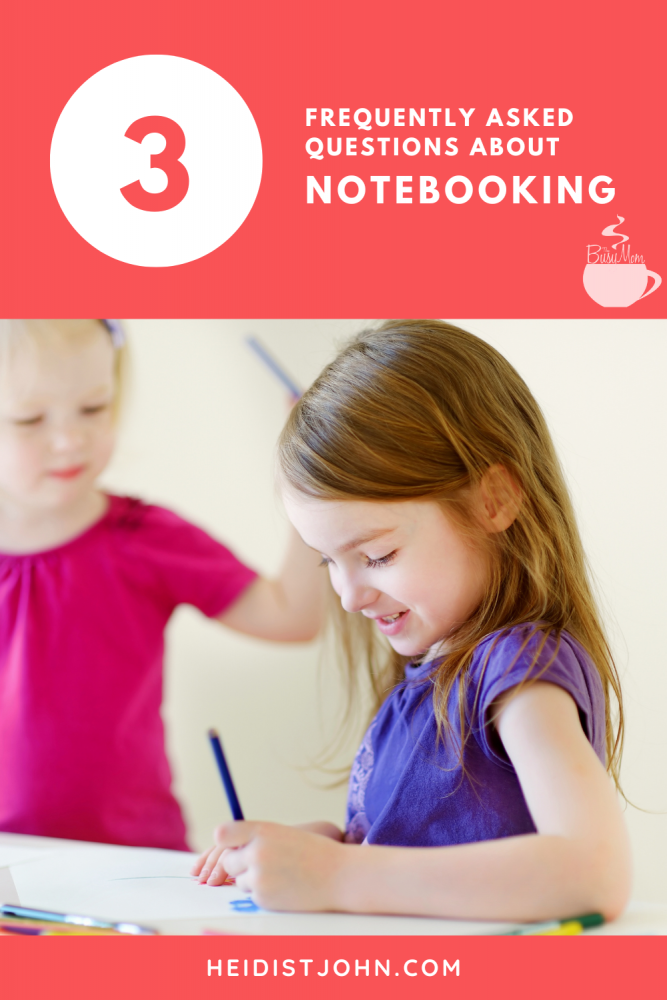One of the biggest challenges I find with homeschooling is scheduling it all in. Even if we don’t have a super set and outlined schedule, it’s still one of the biggest stressors when it comes to the homeschool year. I want to make sure I fit in everything, but I also want to make sure I’m not overwhelming anyone. I tend to let my kids lead in that realm of things, as far as how much they can do. I set the guide because we do need to cover certain things each year, but beyond that – it’s up to their ability and desire.
We usually end up doing much more than I had planned because my kids are eager learners and love to read. Often times at the beginning of the year I’m shocked at how much we have planned for the year. I believe that our relaxed approach to our schedule is a huge contributing factor to them having such a love of learning.
The next challenge is the wide age range of my children. My eldest is in 8th grade, then the next of my kiddos is in 1st, followed by my little one who is 3. I guess the three-year-old would be considered preschool or toddler school level.
As you can see, we have a pretty big age range. You might have more kids which might mean you have several kids in multiple different grades, more than I do.

So, how do we face head on homeschooling a wide age/grade range?
First things first
See if there is anything you can teach all of the kids together. For instance, if your 8th grader is studying American History, why not have your younger children study American history too? They don’t have to do it at the same intensity or depth as the older one, but they can still do it. Many curriculum options out there offer this flexibility to tailor their curriculum for older and younger students to use at the same time. But if they don’t have that option, you can easily relay the information to your younger one in a manner that they understand.
Next, keep your schedule super simple.
For us, this is essential. And as more of my kids are heading into school age, it’s been a huge life saver for us.
I have a rather untraditional schedule with my kids. It works for us and it helps me teach each of them according to their needs without feeling like I’m overwhelmed, overwhelming them, or missing anything.
My approach: I don’t teach every subject every day! That’s right. We have designated days for our more meaty subjects. This allows us to focus on one topic at a time and allows me to spread myself amongst my kiddos to give them the best attention I can.
So, how does this look you’re wondering?
Let’s say we do Math on Monday, History on Tuesday, Science on Wednesday, Language Arts on Thursday, and Foreign Language on Friday. That’s just a sample of what it could look like. Many wonder – but what about constant practice? What if they forget skills from one week to another until that subject day arrives?
Here’s how we prevent that:
Using the example above, Math would be taught on Monday. We would work through the lessons and then practice with our worksheets. I would work with the older student first and work my way down through the younger ones.
Then Tuesday comes along and we’re on to History, but before we start History we do another Math worksheet. Our math program offers 5 worksheets for each lesson so it happens to work well with our schedule. If that weren’t the case, I would simply create or find worksheets based on Monday’s lesson.
This way, they are refreshing and practicing their newly learned concepts all week, but just with a simple worksheet which takes maybe 5 or 10 minutes. They’ve taken the core of the lesson on Monday – leaving the rest of the week for practice.
Back to Tuesday, when we’re on History. After we do our Math worksheet we do our History lesson and discuss it. We do some map work and really dive in to any discussion questions that we may have. But we don’t just forget about it until next week. On Thursday we would have a brief discussion with my youngest about what we learned on Tuesday and I’ll have my big kiddo write down a paragraph or two. Catering to their capabilities.
This keeps things fresh in their heads, allows for time for it to really soak in for a day or so, and allows for me to see how much they have retained. It’s a super chill approach to learning that we have grown to love.
If this schedule just does not appeal to you, I have another suggestion. We’ve tried this method before and although we liked it, we went back to our one-subject-a-day method.
Work with your older kids first. They are more likely to have work that they do more independently than your younger ones, but may need you to either teach the lesson or at least assign them the lesson for the day should they be working on it independently. When my eldest hit 6th or 7th grade, she did a lot of her work independently and I would just grade her work and discuss it with her after.
Once you’ve finished with your hands-on lesson teaching with your older kiddos, move on to your younger ones. You’ll have the peace of mind that your older kiddos are working on their school work, which allows you time and focus to teach the younger ones.
Encourage independence as soon as they show readiness.
As I mentioned above, my eldest started doing a lot of her work indecently once she hit 6th grade, for sure by 7th grade. How did I know she was ready? It just got to a point where I realized she was ready to take a stronger hold of the reigns and work at her pace. She works much faster this way too. I think my schedule was holding her back a bit.
Total side note: This is something I just adore about homeschooling, my kids can begin to work at a pace that suits their learning needs and style so much sooner than they could in what’s referred to as a traditional school setting. But with homeschooling booming, I think traditional is changing.
Takeaways
Don’t try and teach each of them different subjects at the same time. If your kids are working on two different subjects at the same time, it should be independently. Stretching yourself into different subject directions AND grade directions will cause you to burn out.
Plan your schedule realistically. Don’t try and do every single thing every single day with each kid. It’s just not realistic. I like to think of it this way: in college, do you do every subject every day? Nope! So there is no harm in not doing every subject every day now either.
Work with the older kids first, then work with the younger ones. While you’re working with the older ones have the younger ones work on something like handwriting or maybe give something for them to color. I have a few connect the dots booklets for my younger kiddo. This keeps her busy while I teach her big sister, and helps her practice her numbers!
And finally, encourage your kids to begin working independently as soon as they show readiness. This is beneficial to them and their development. Taking ownership of their work is exciting and encouraging for them!
xoxo, Marlene
A Diligent Heart
Shop Heidi’s Amazon Store for Homeschool resources, recommendations, and more!























